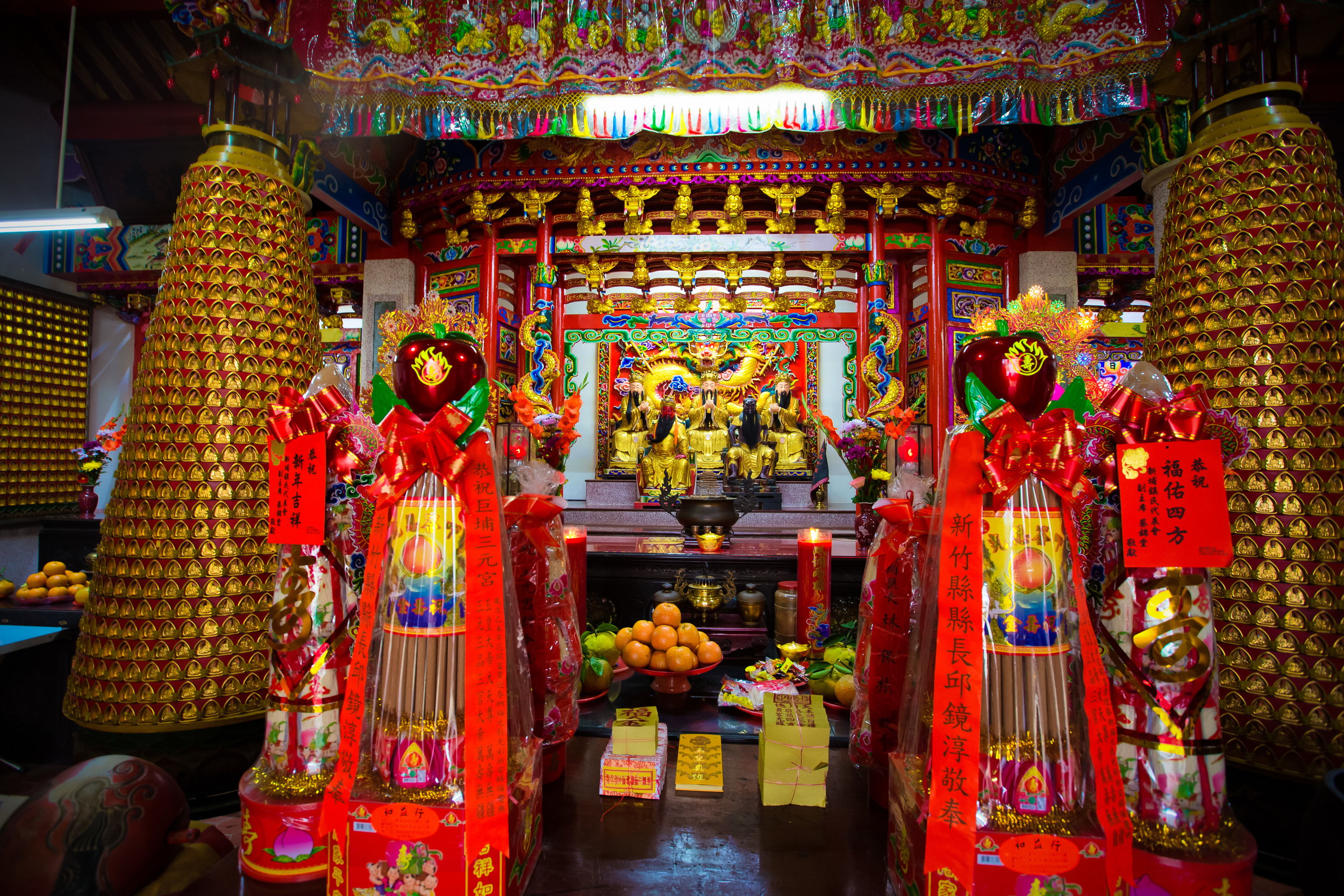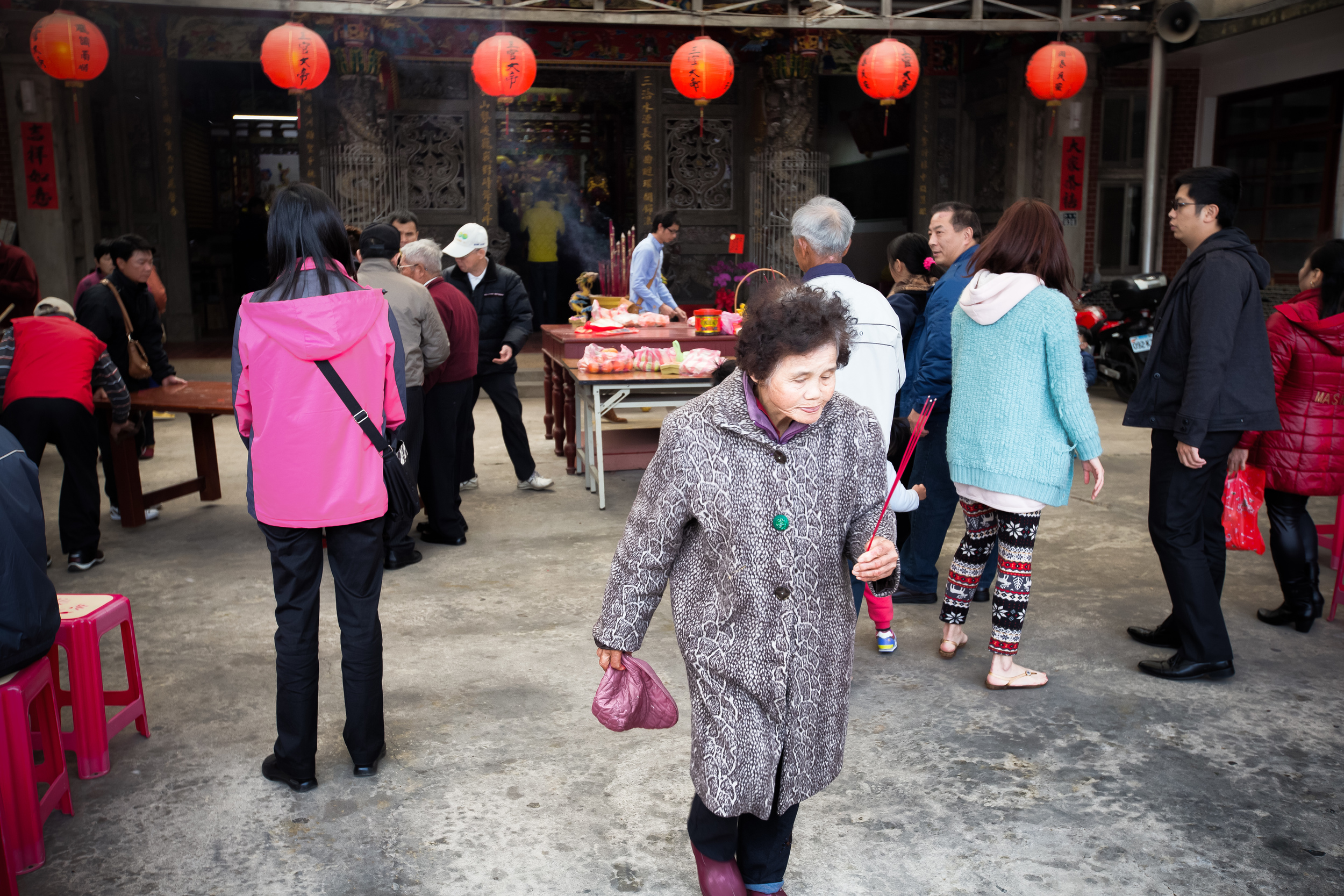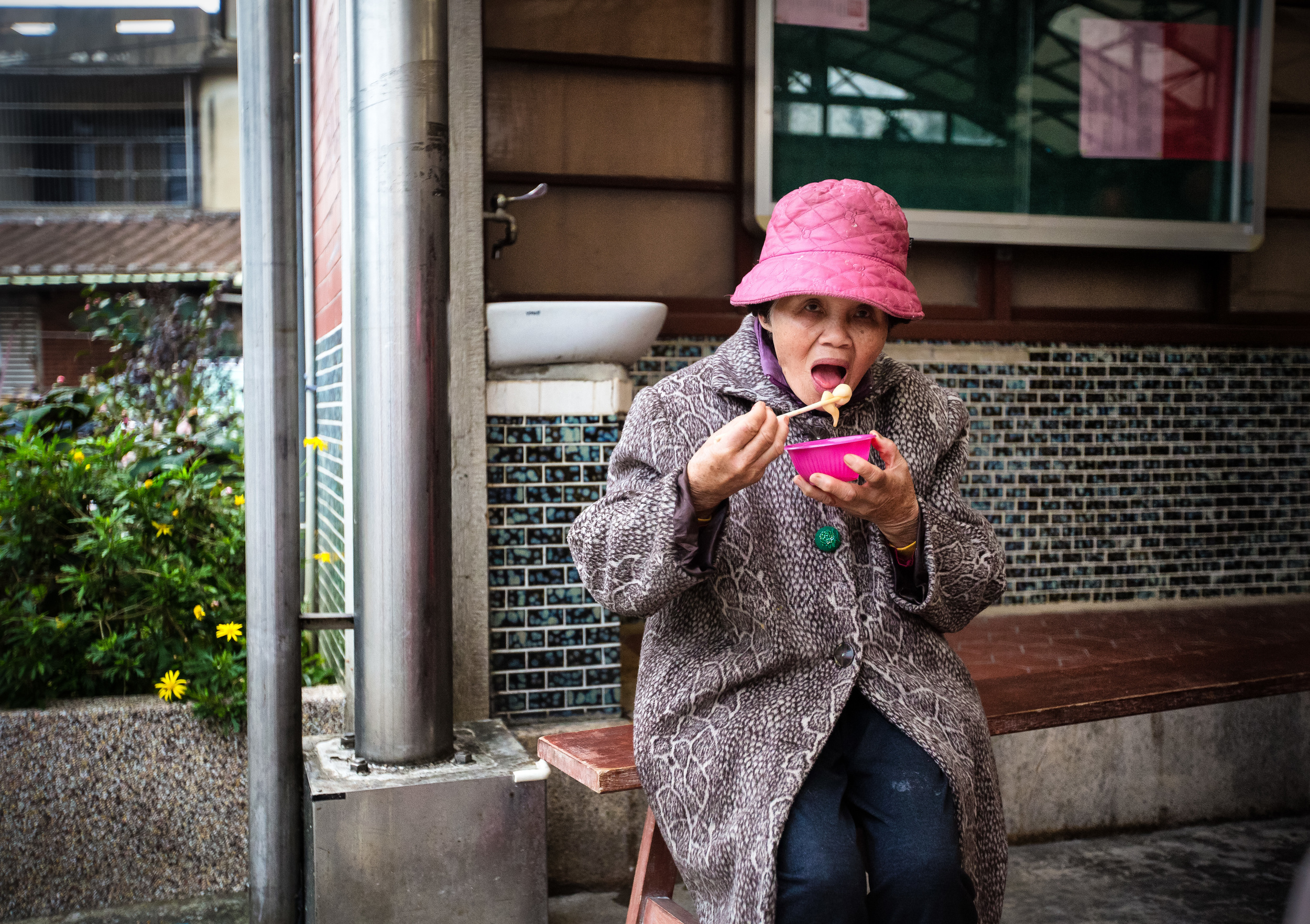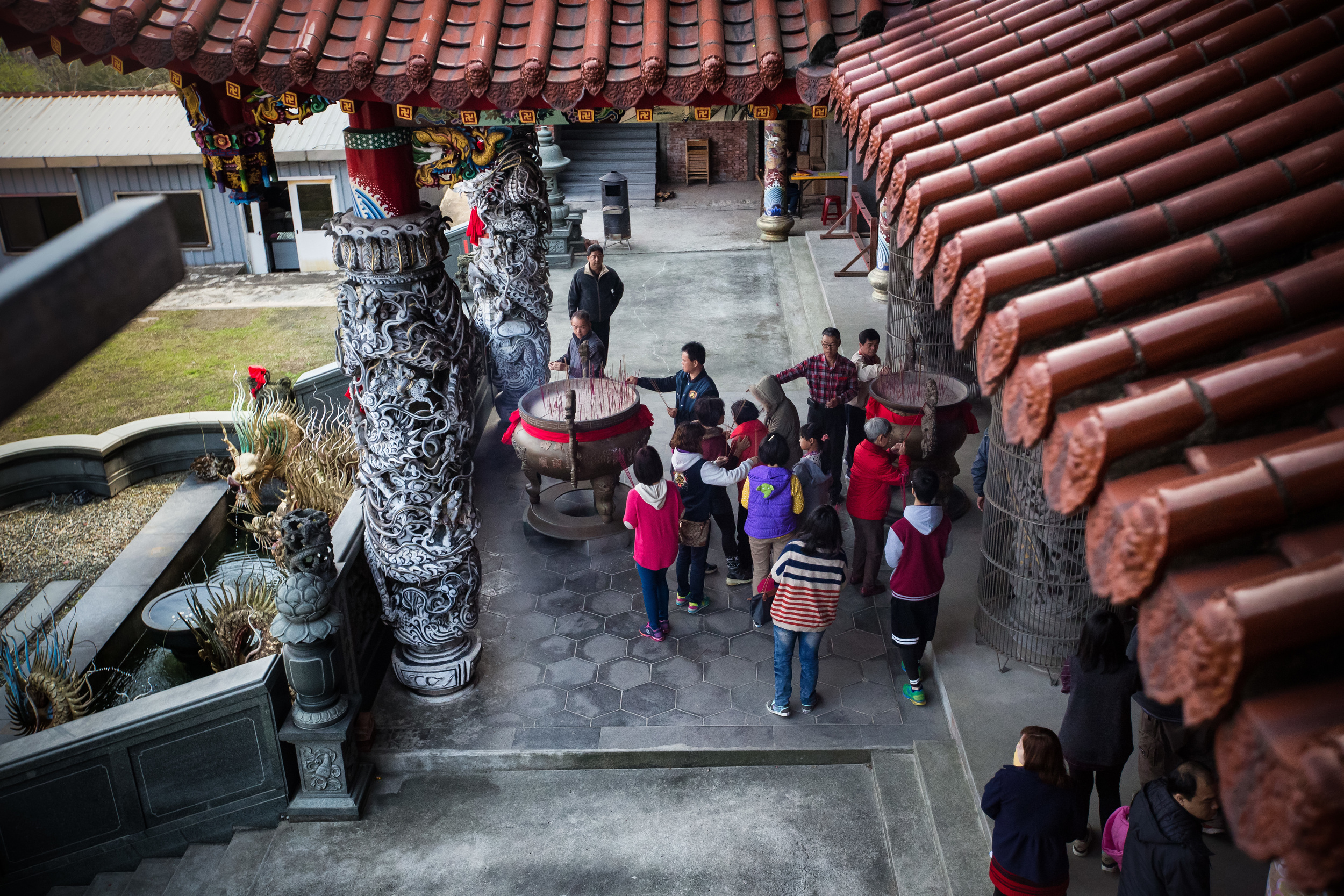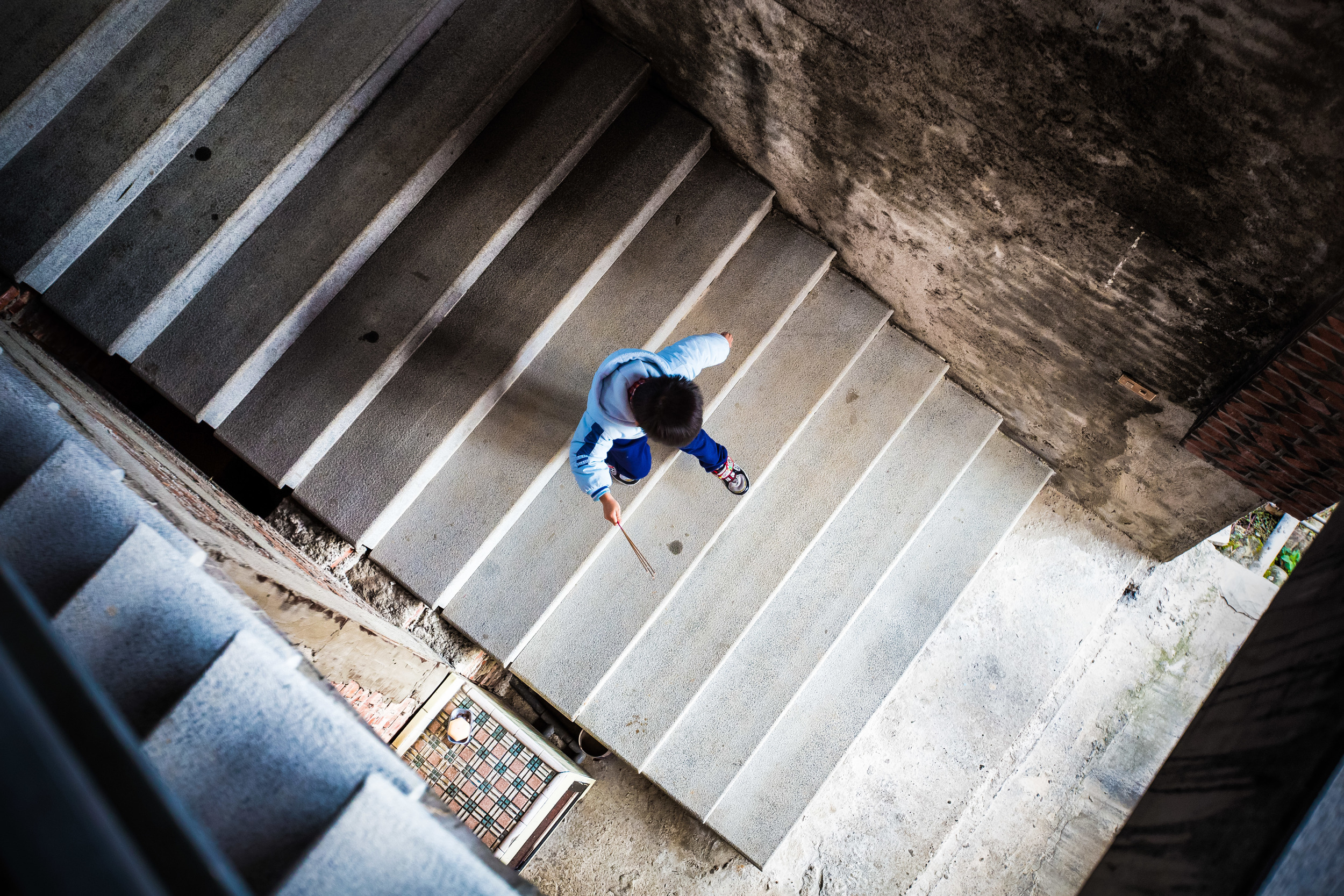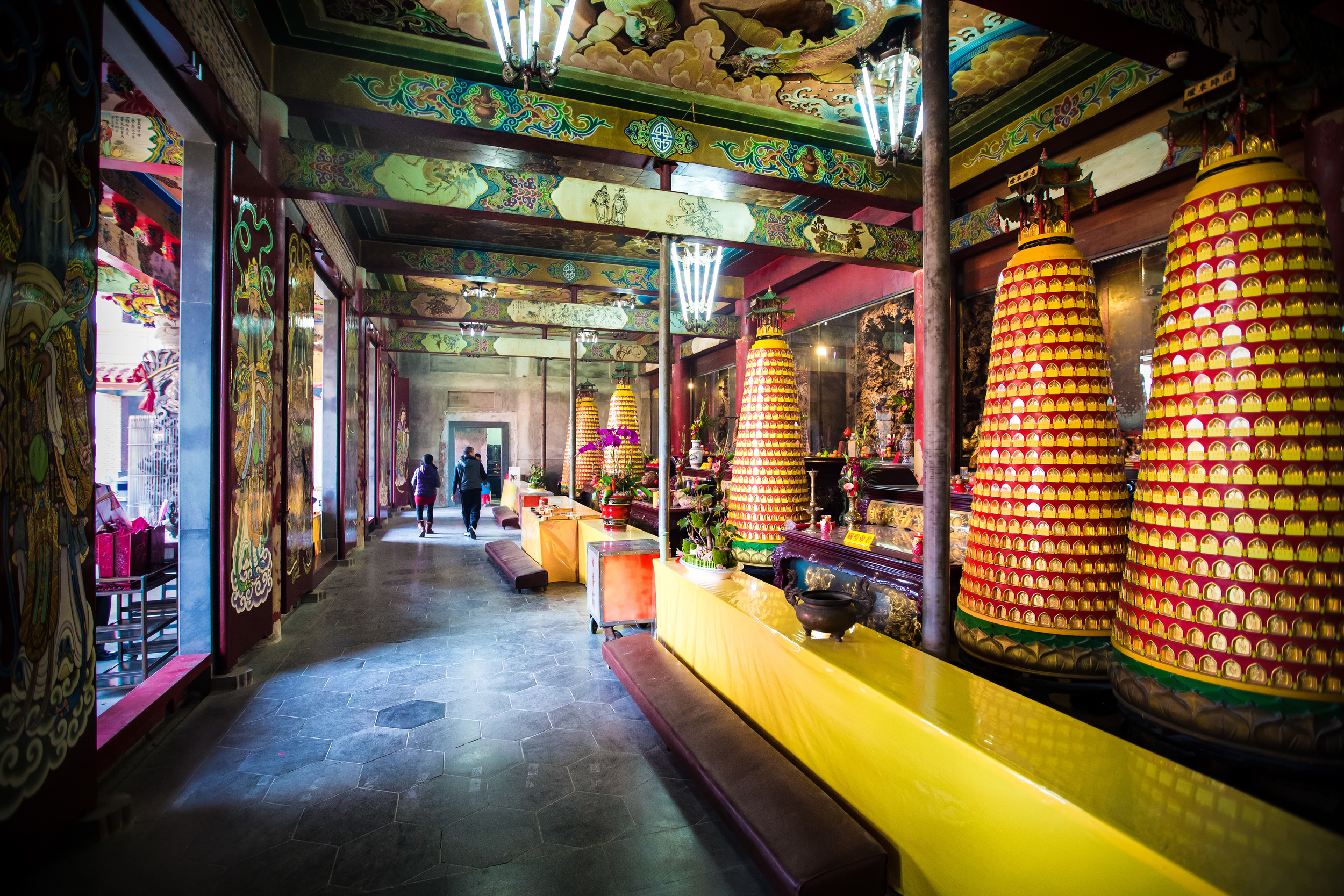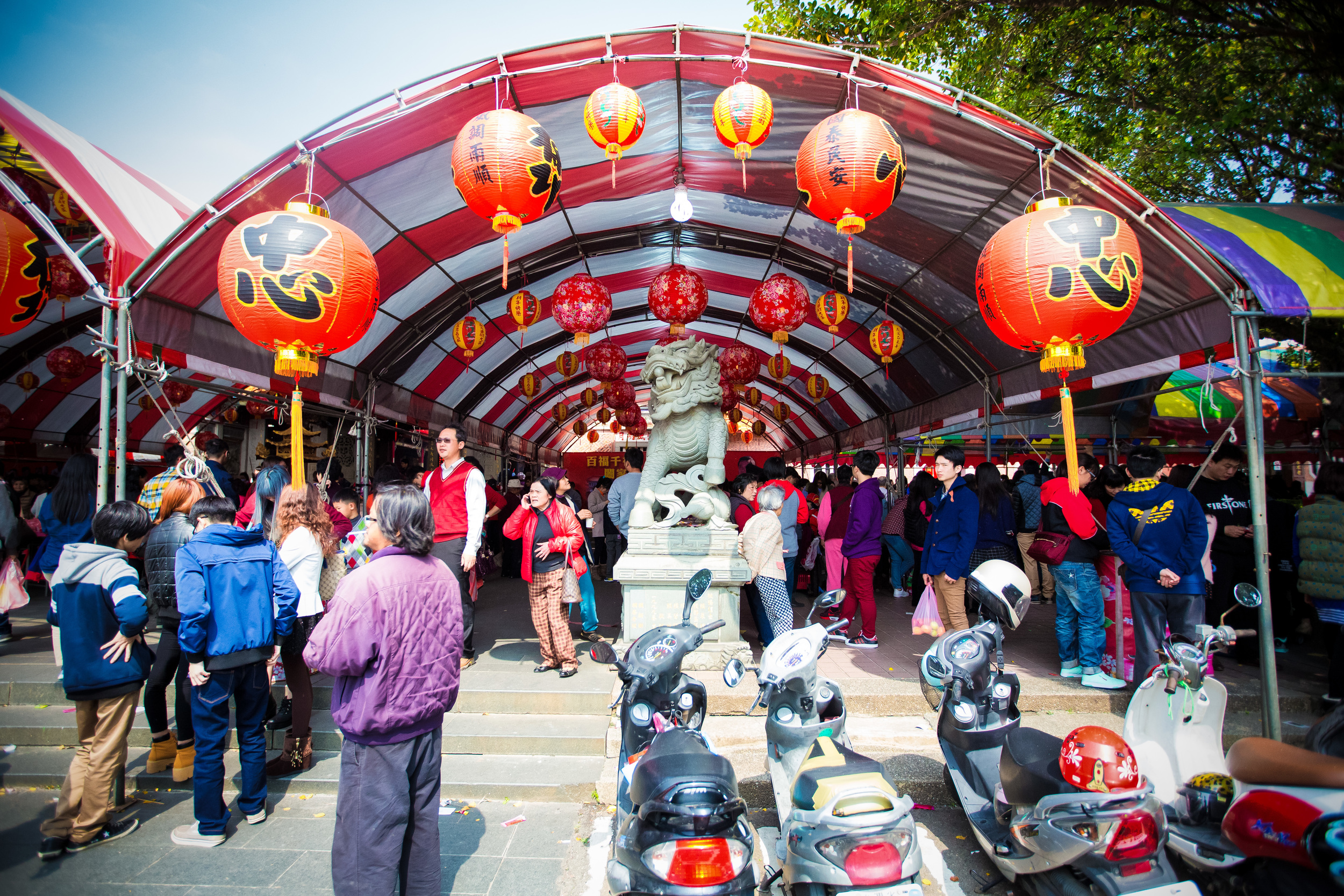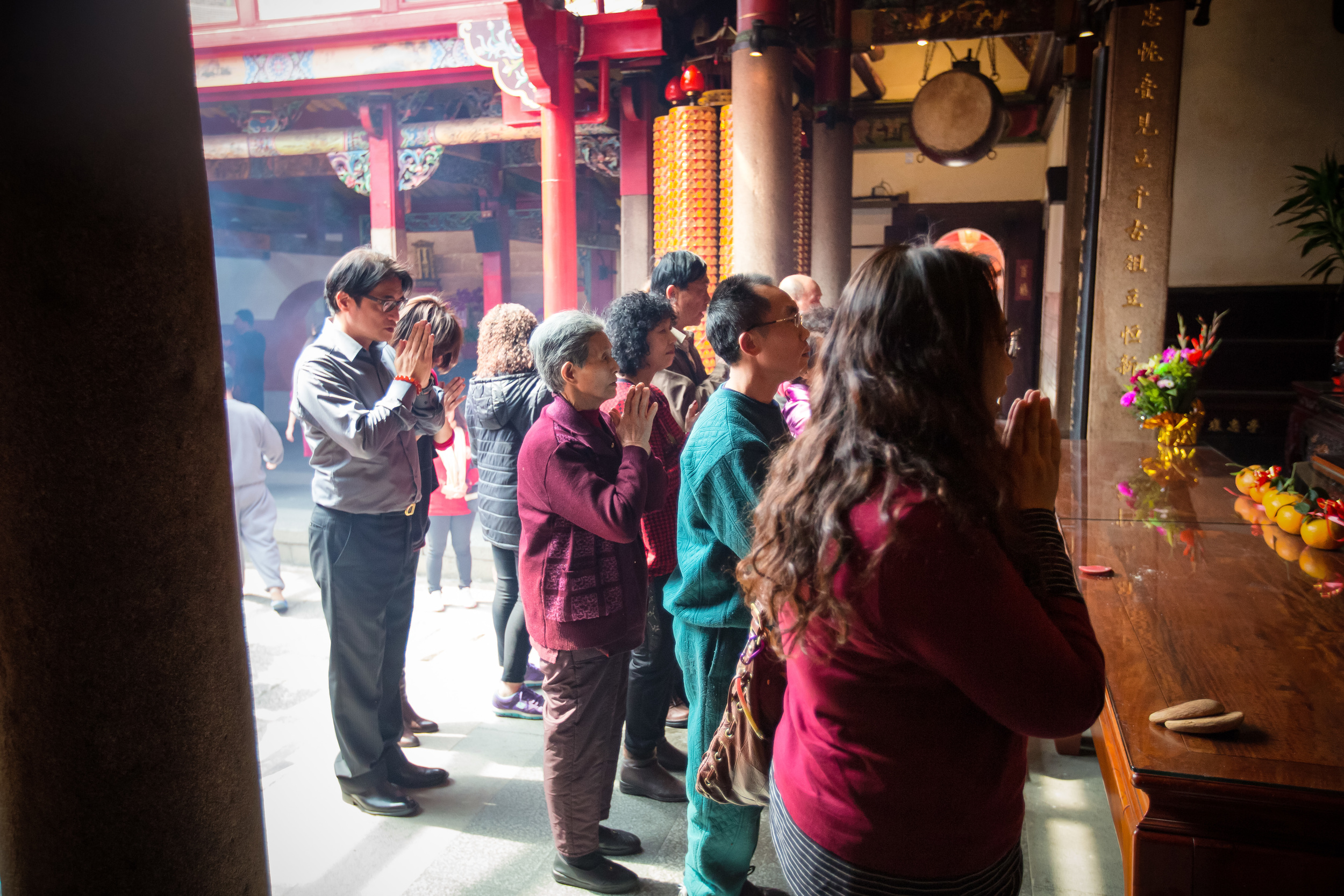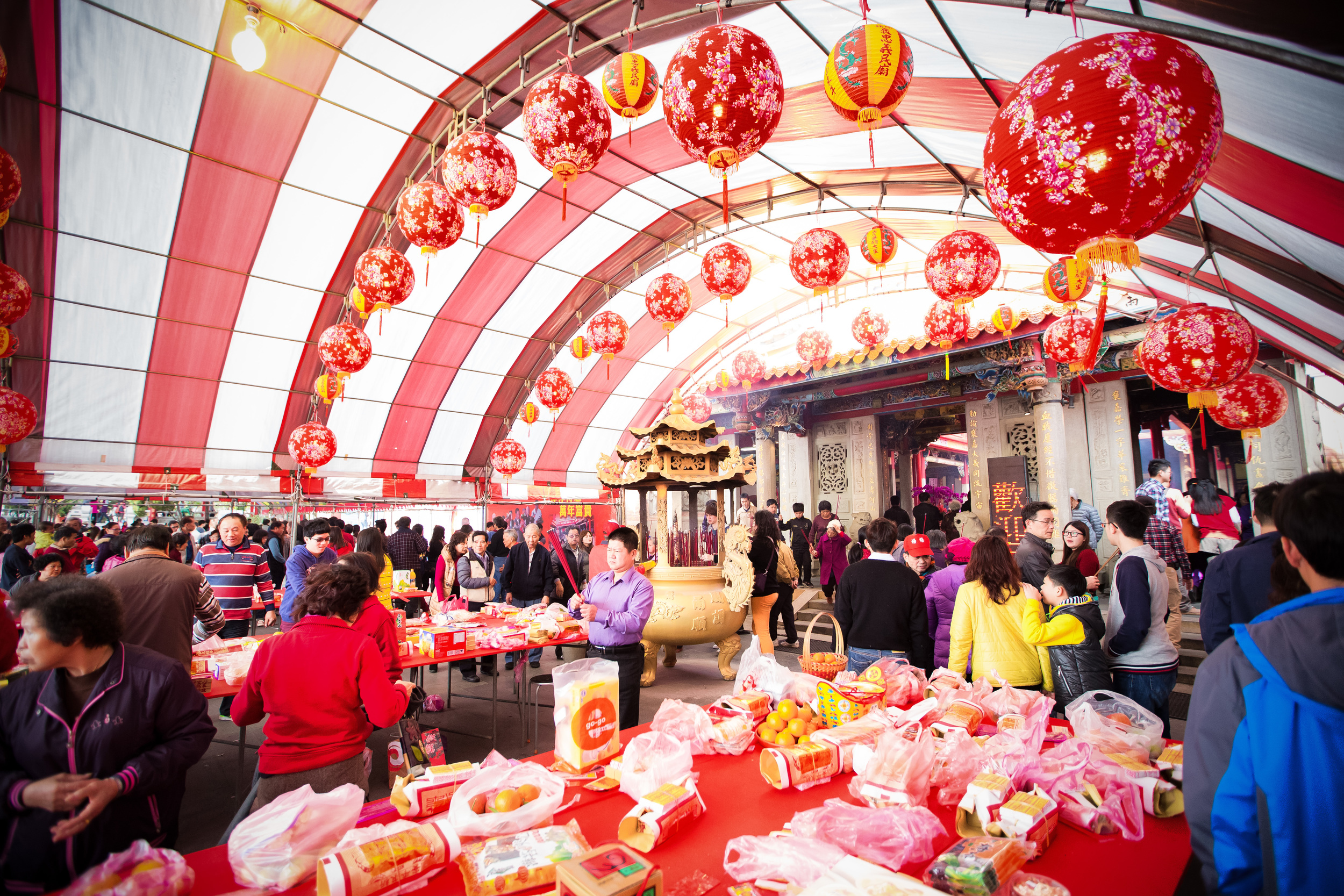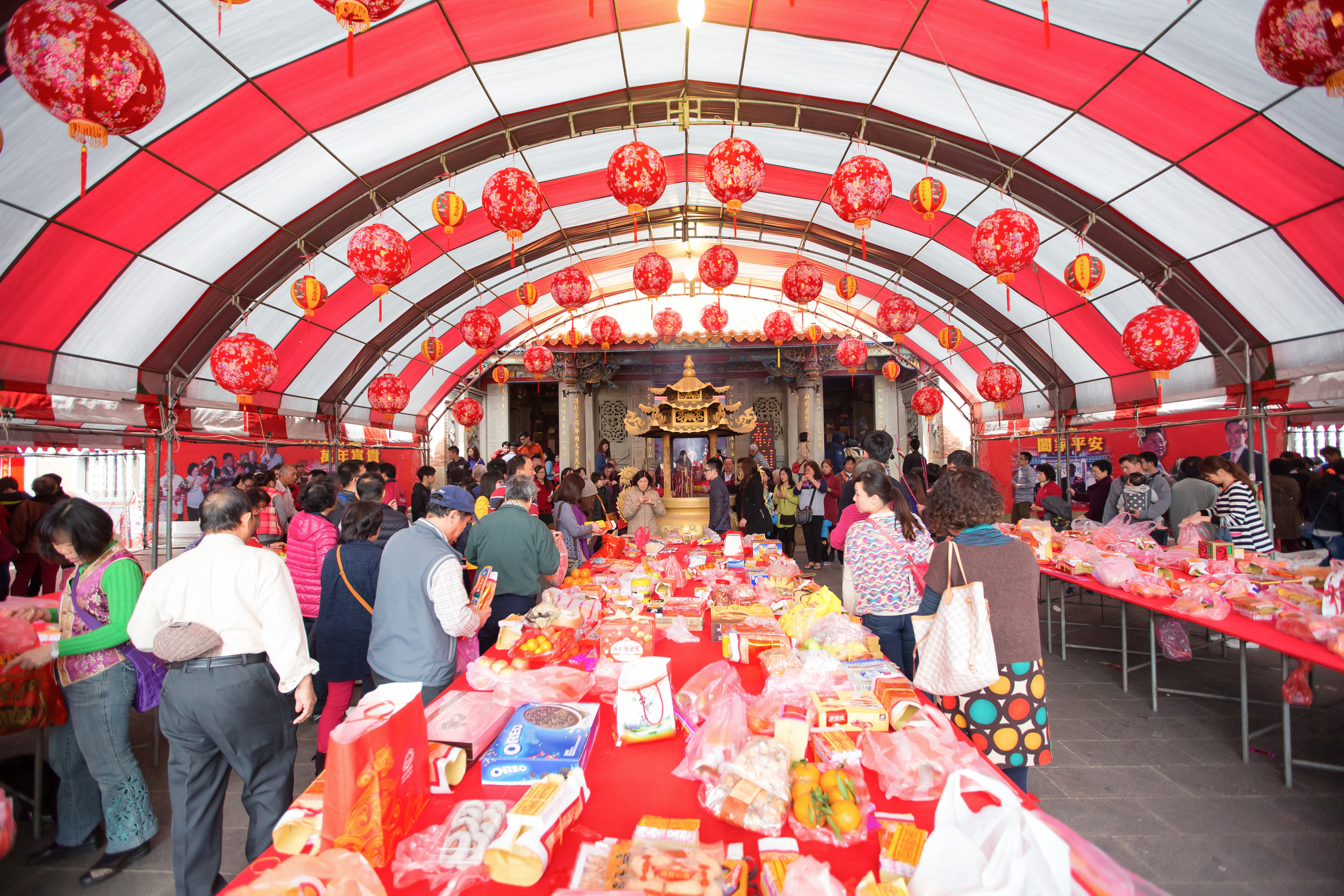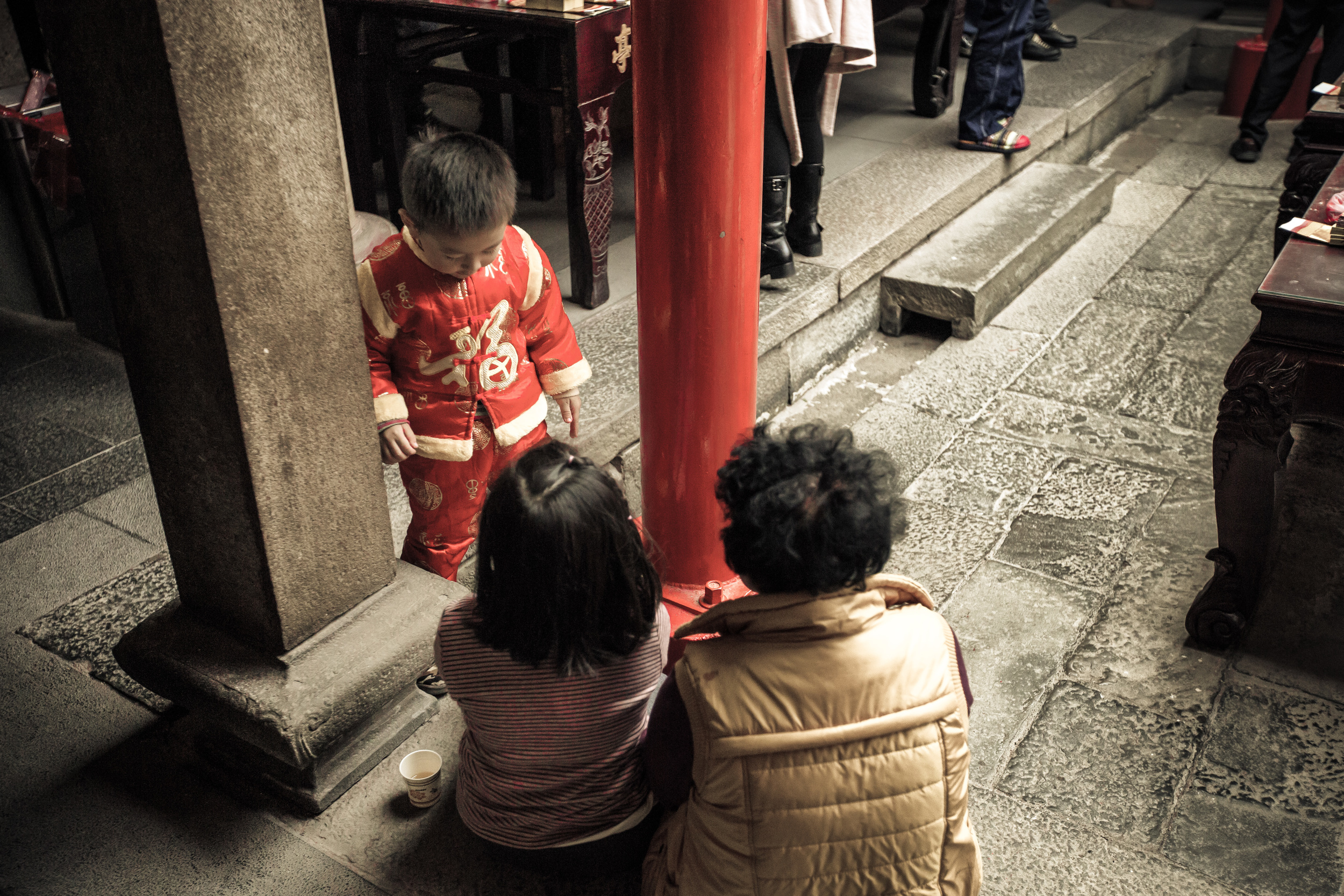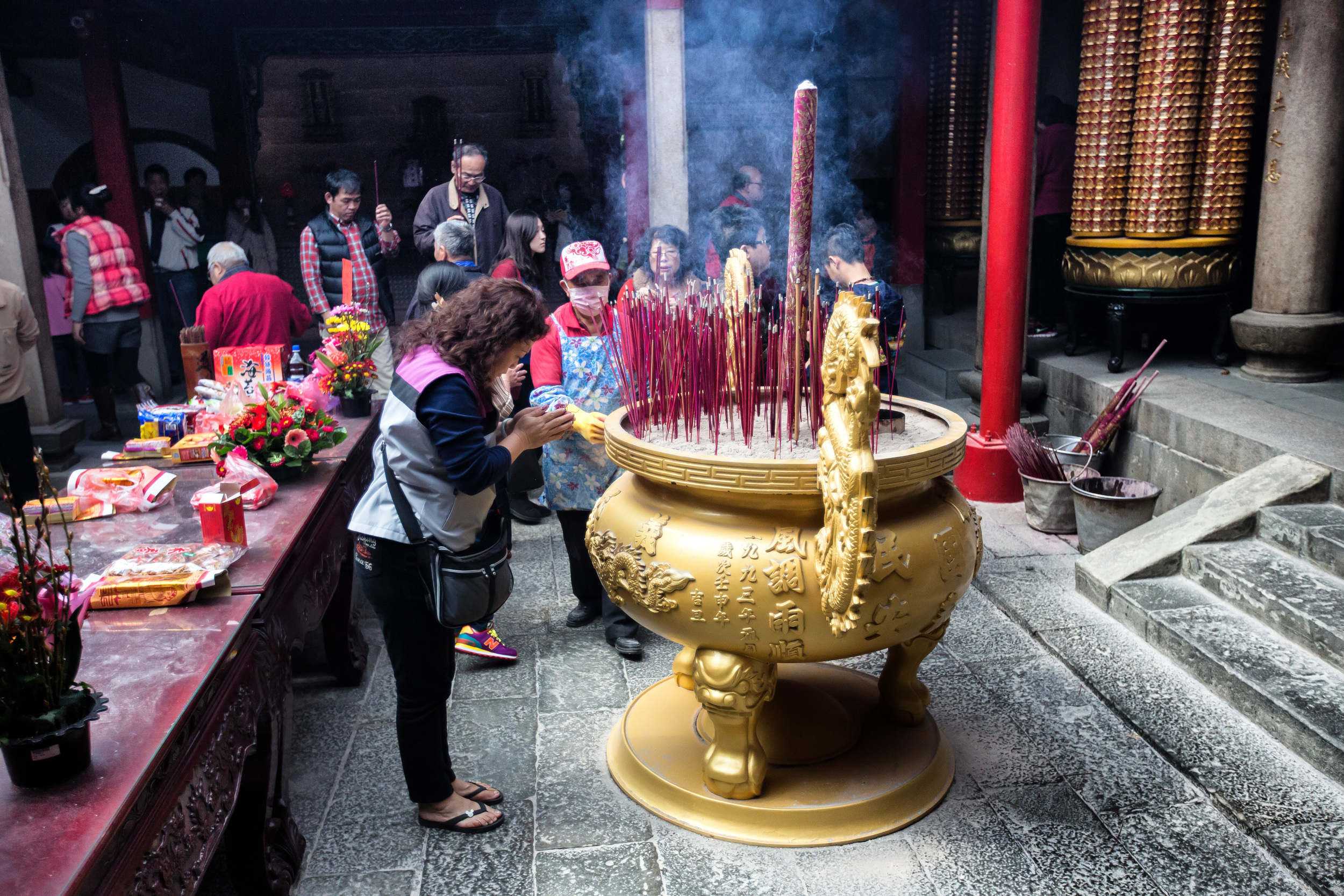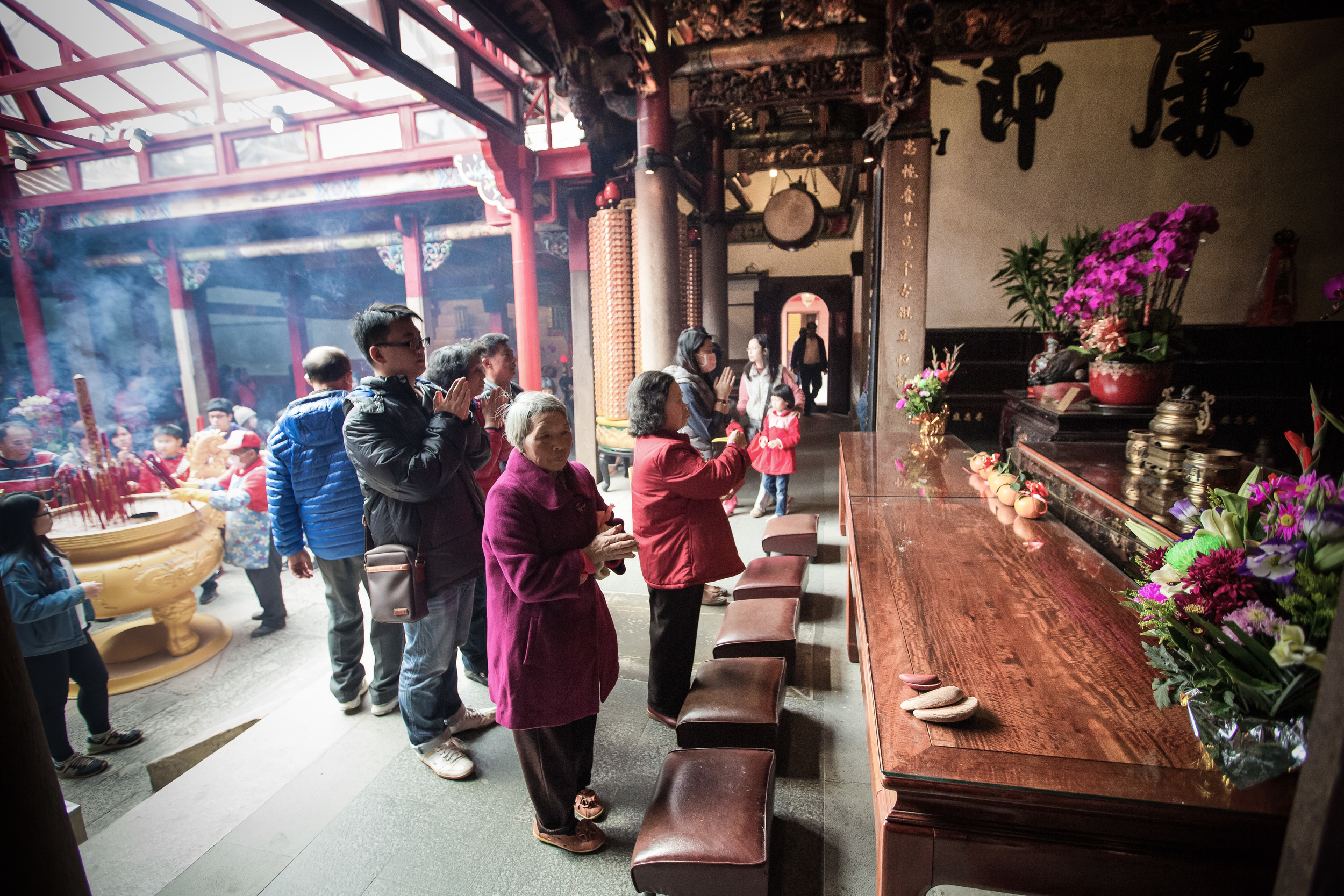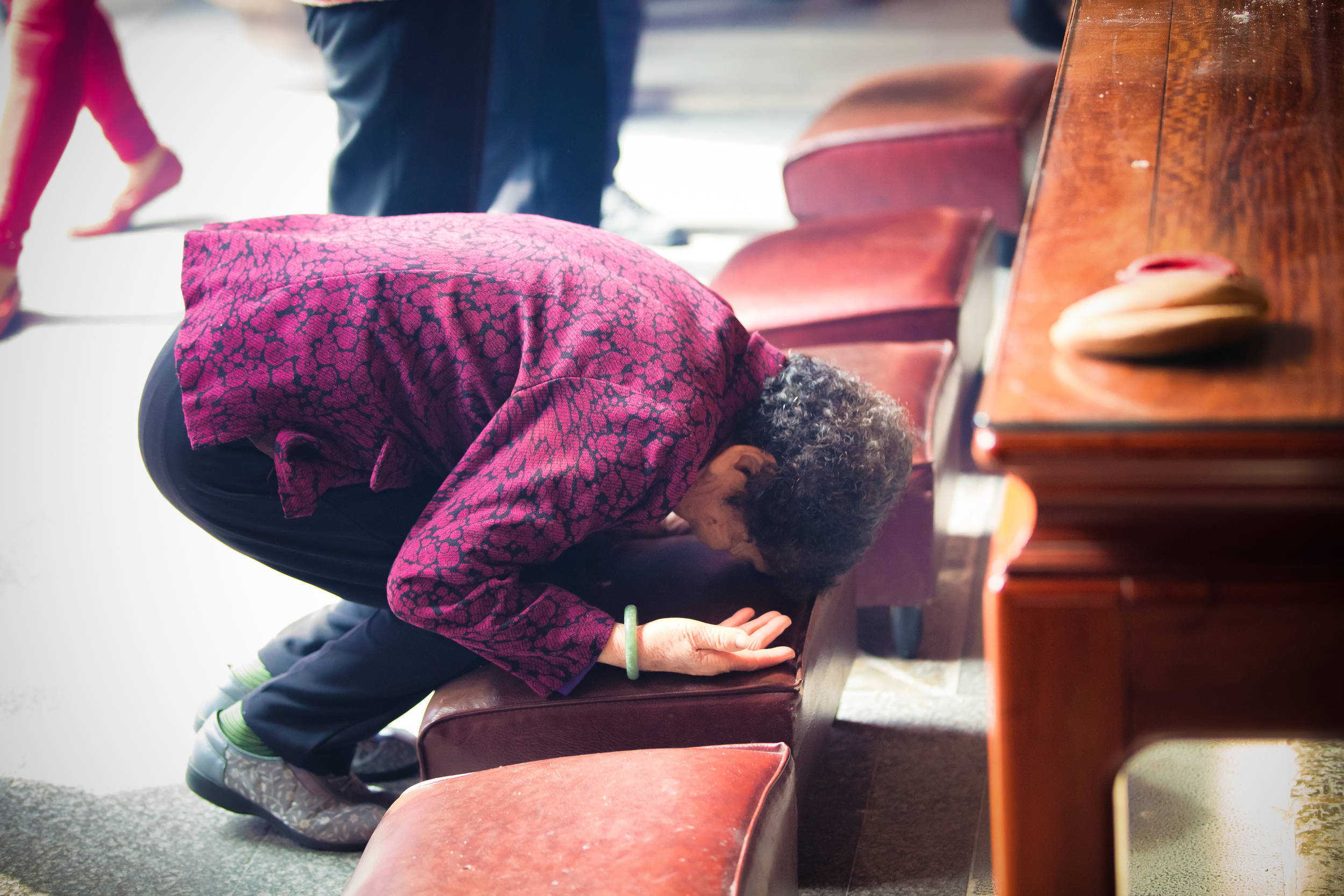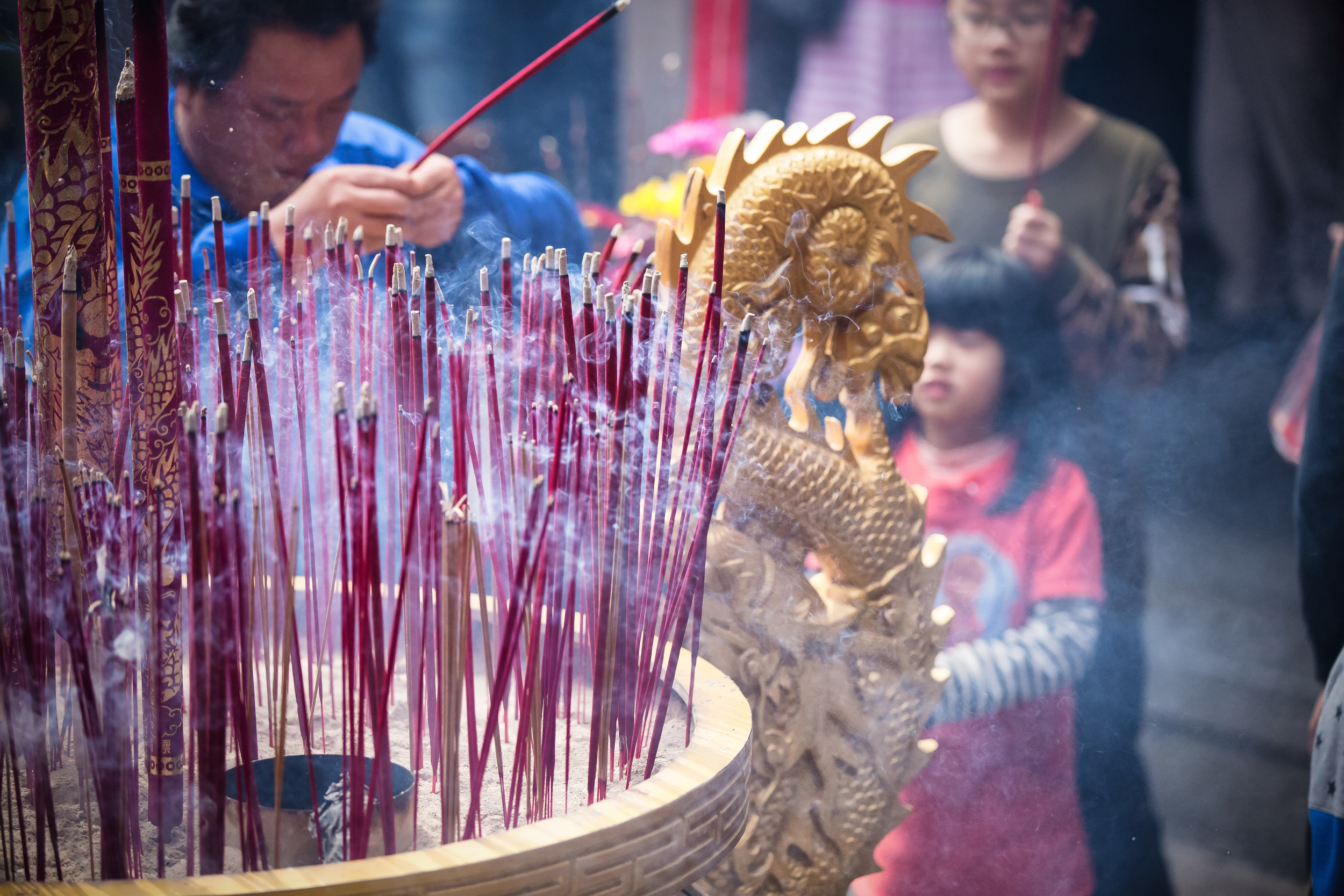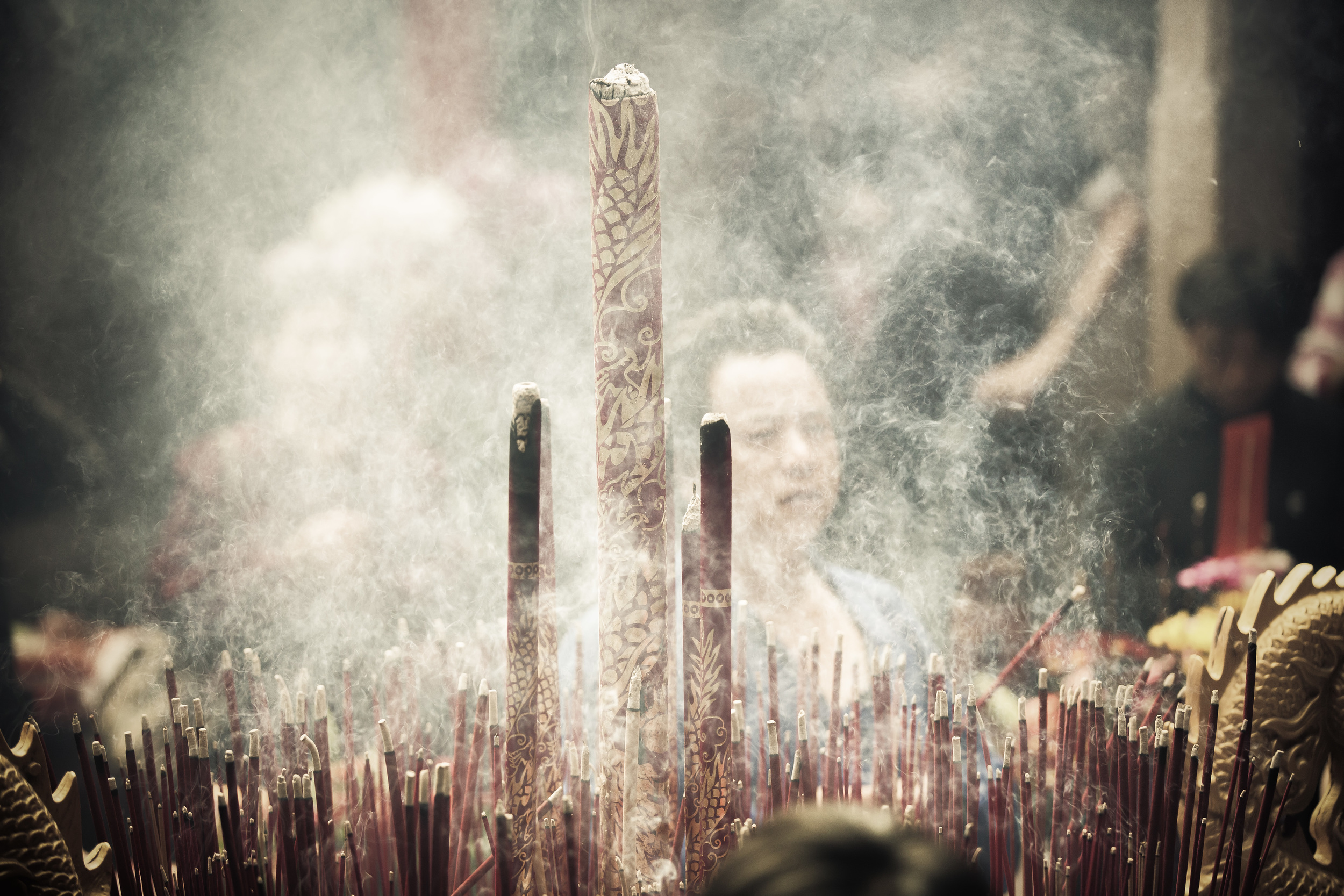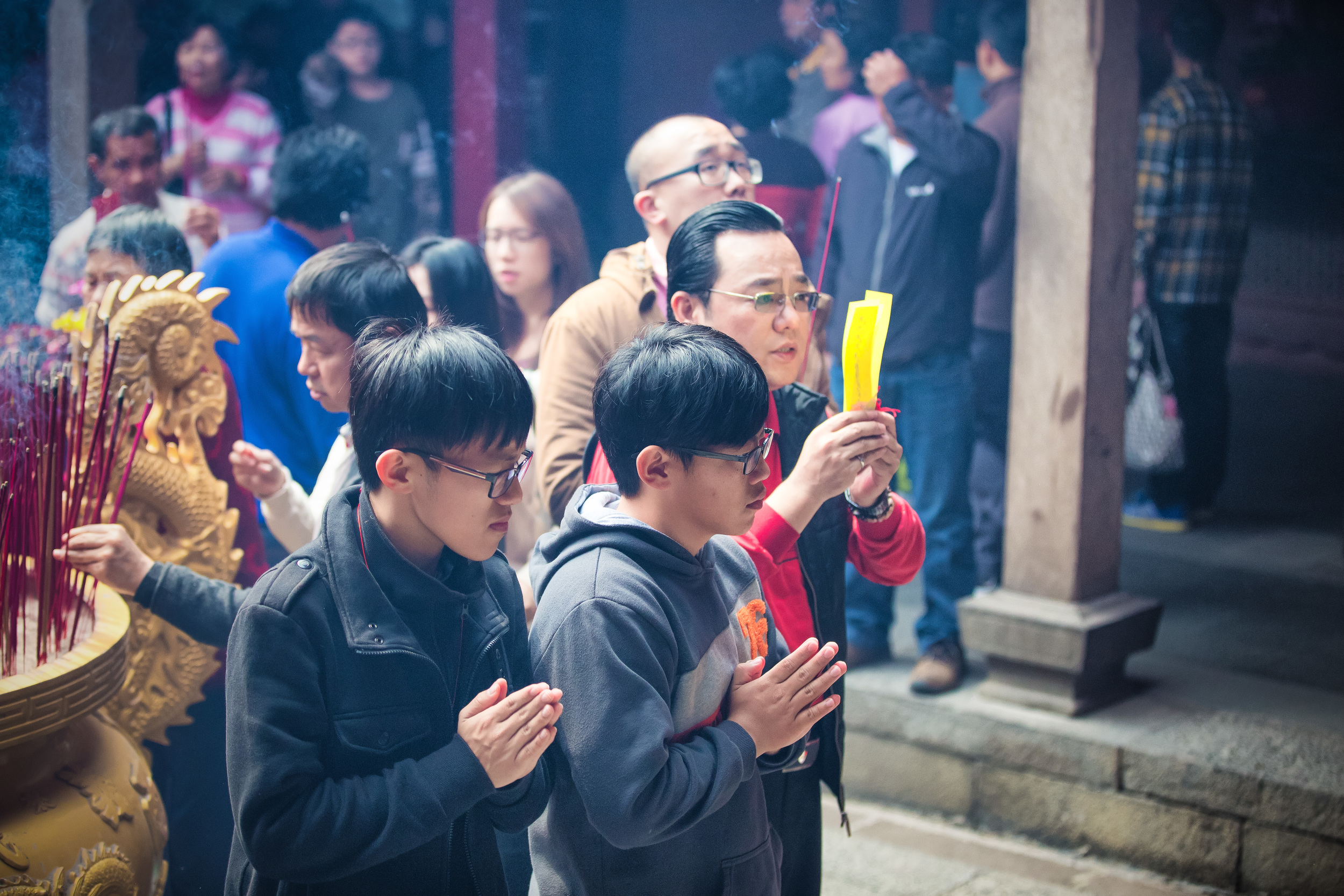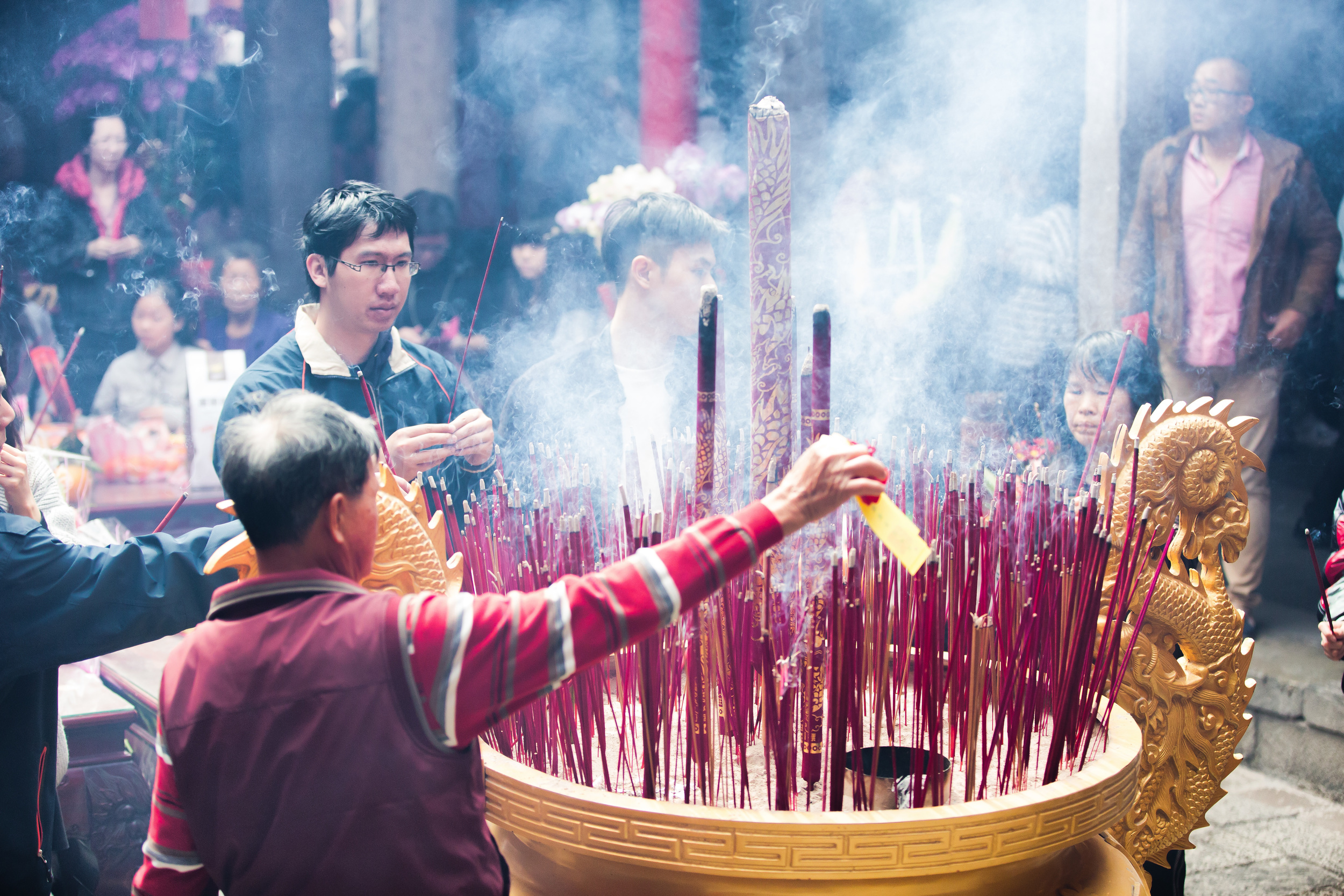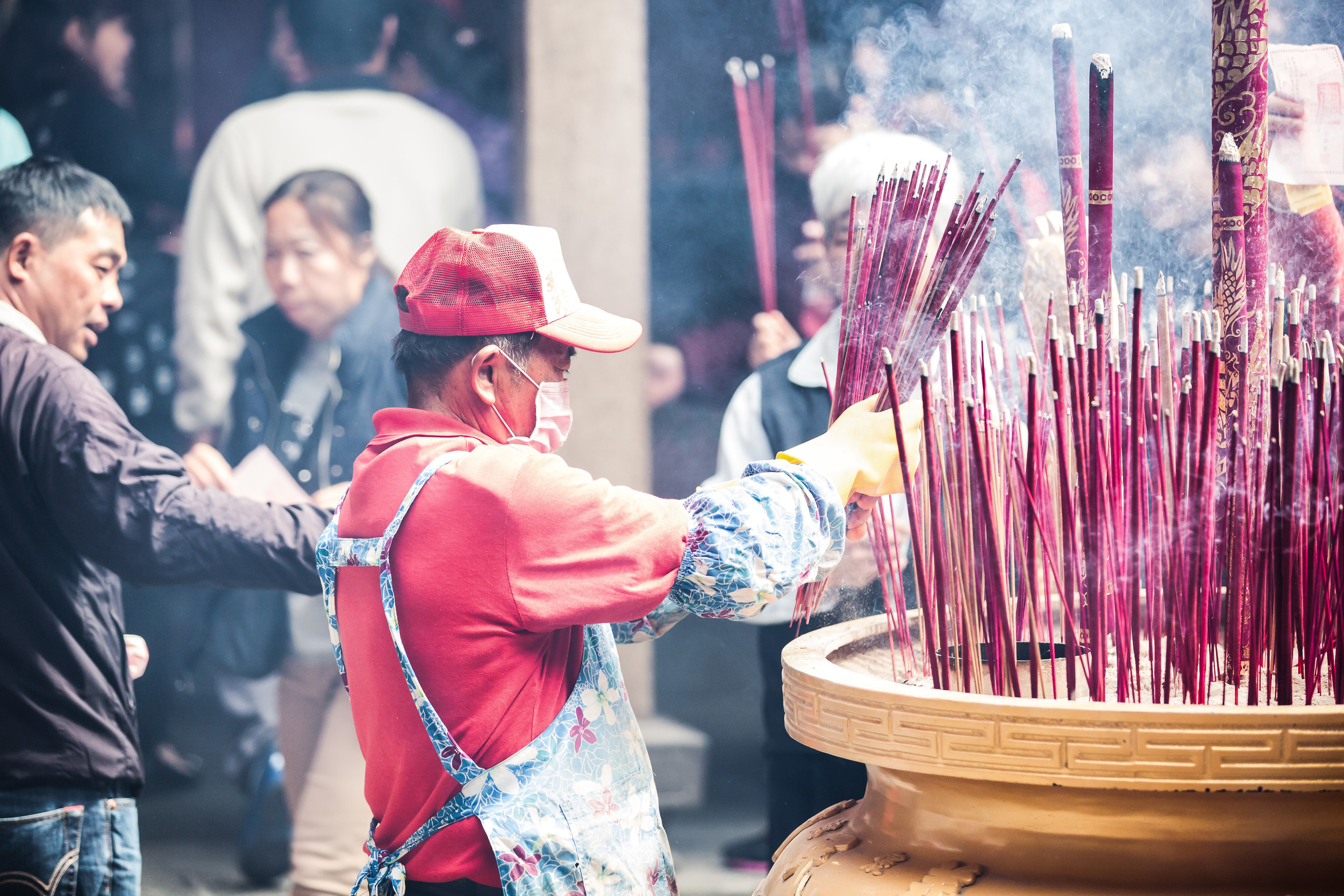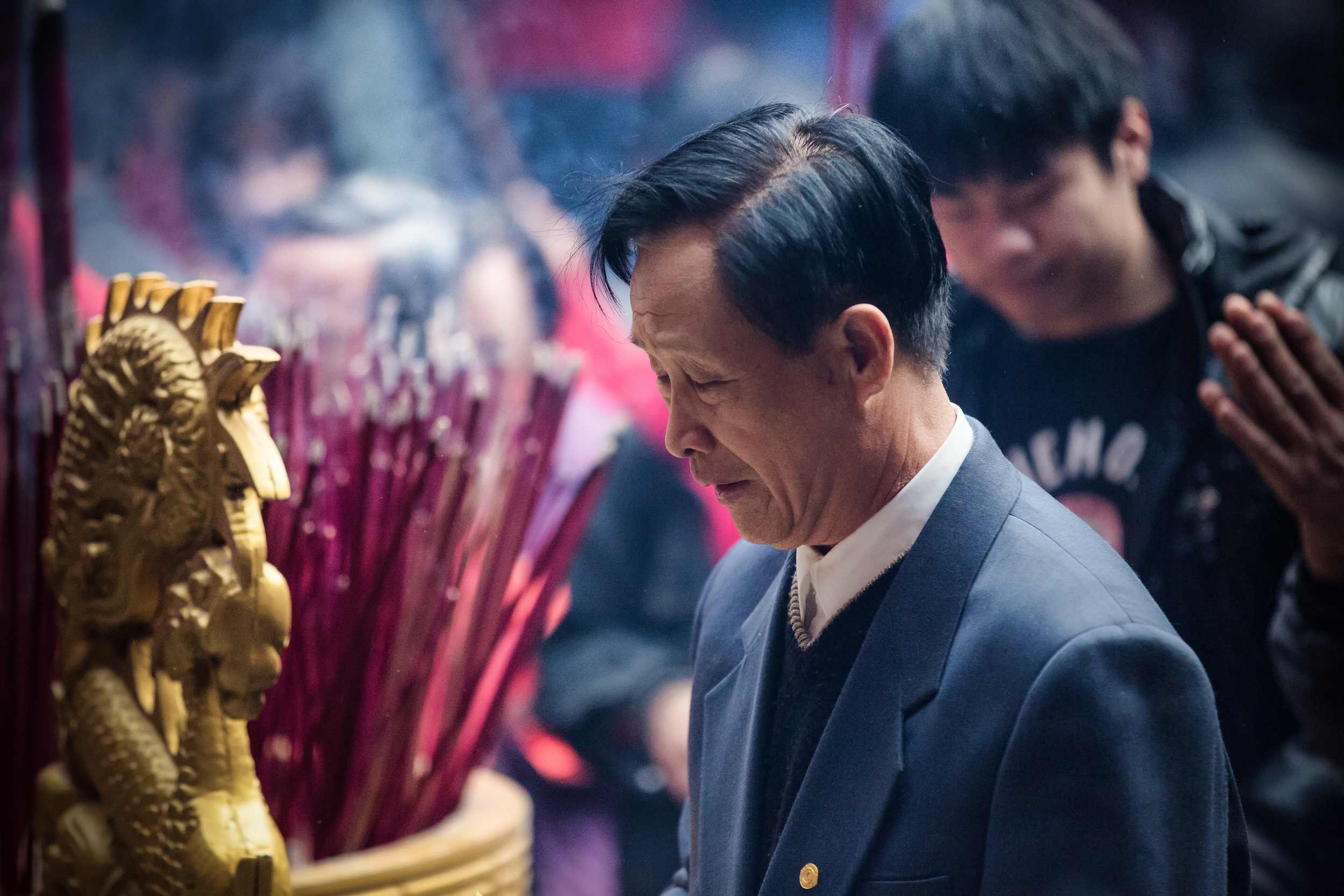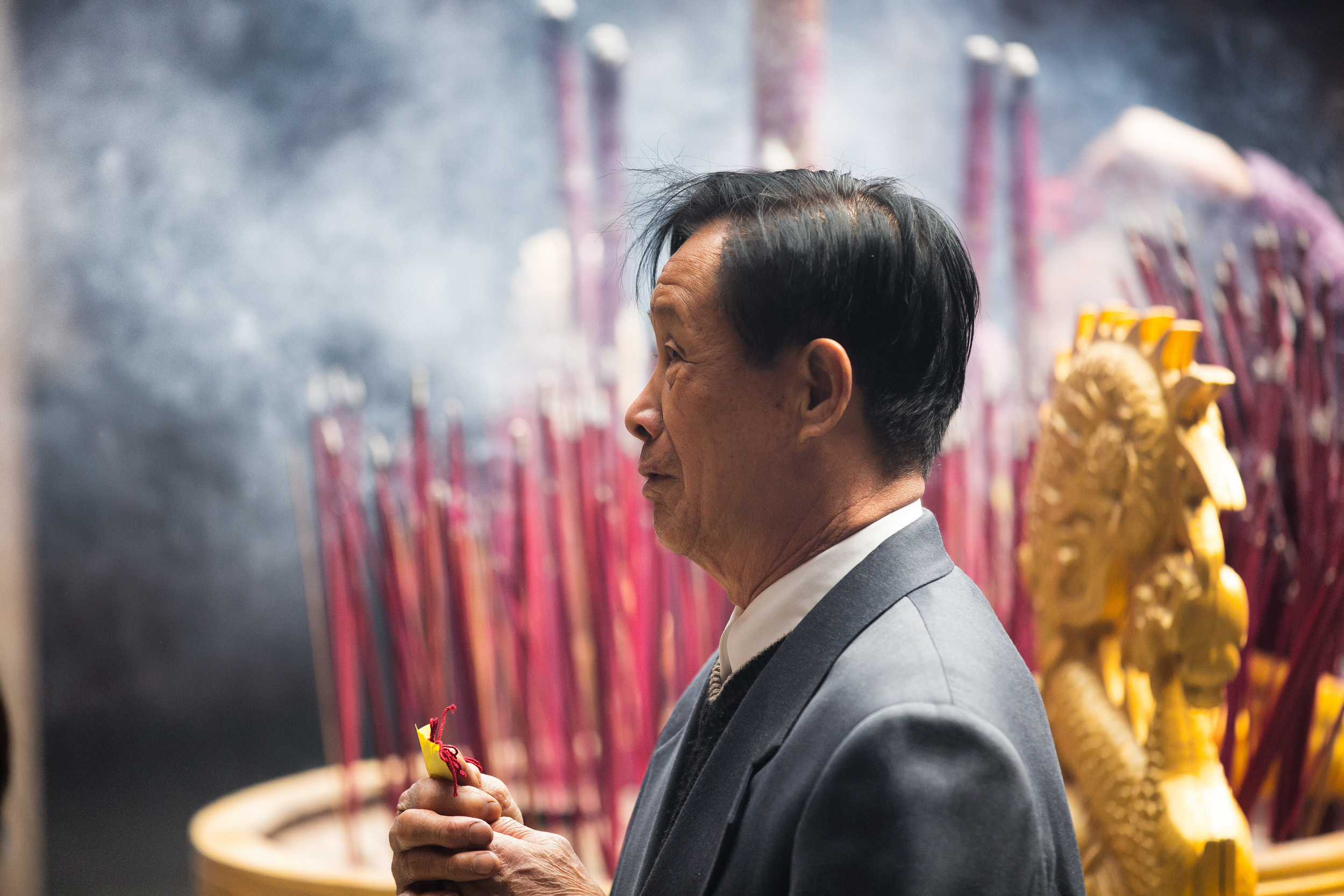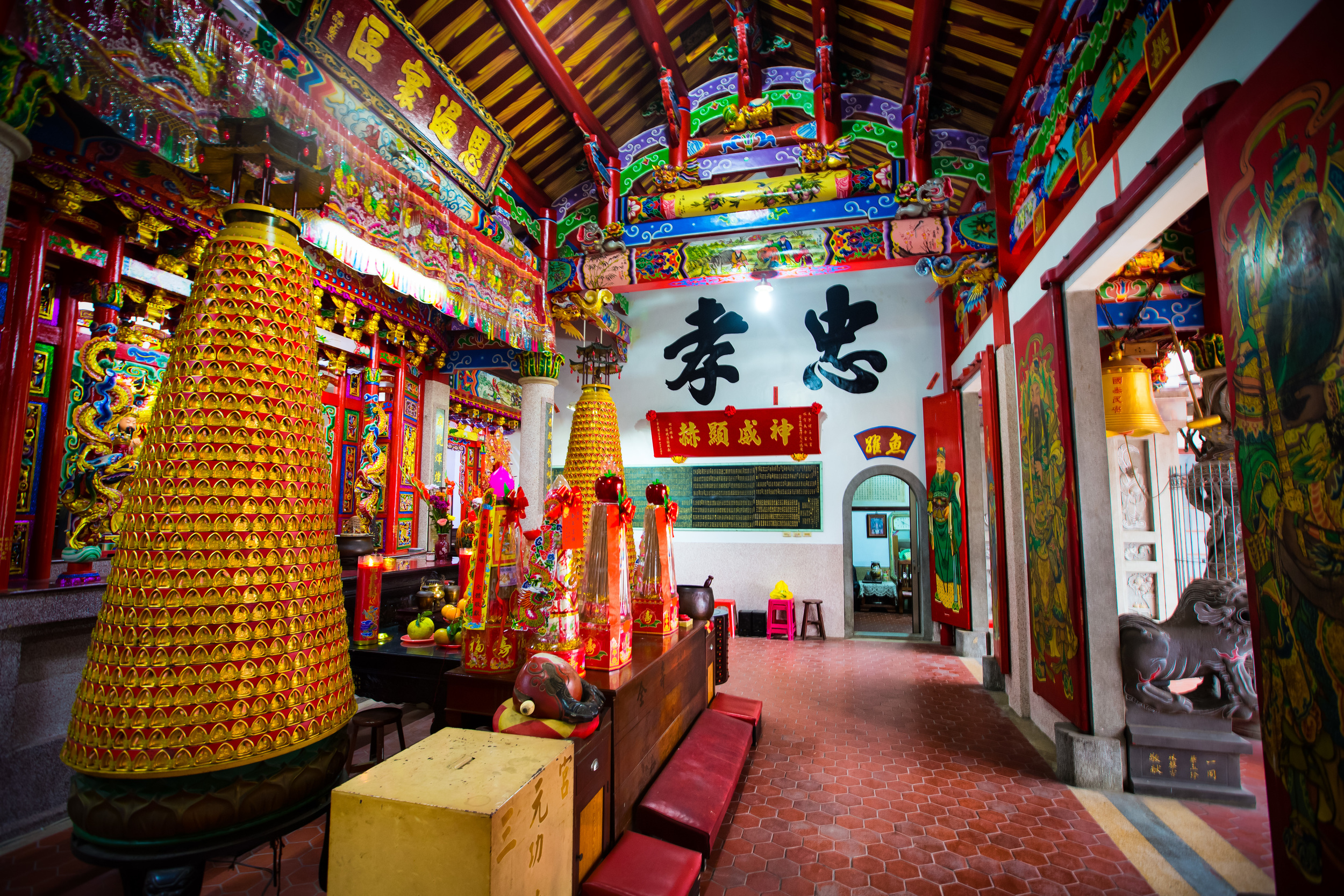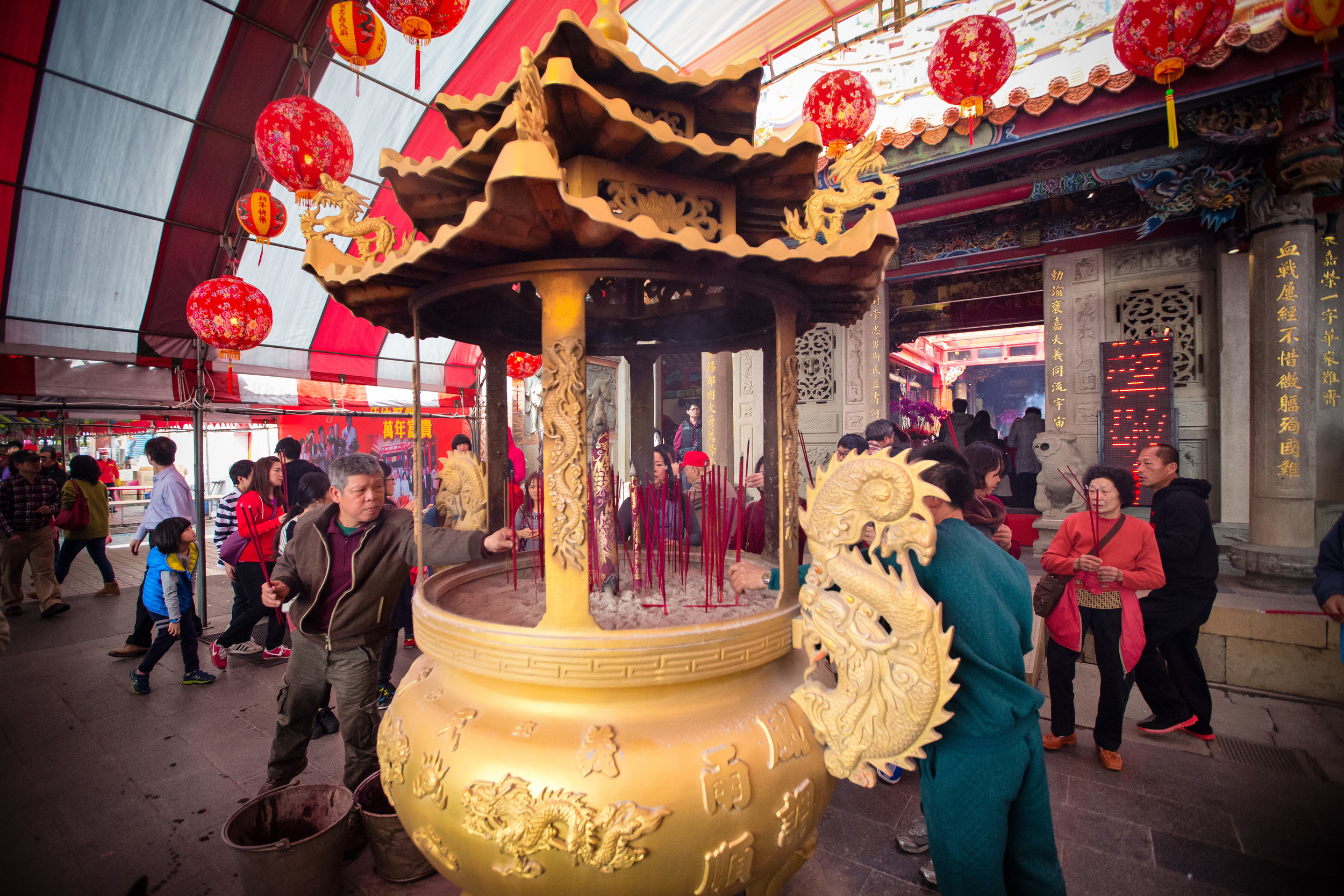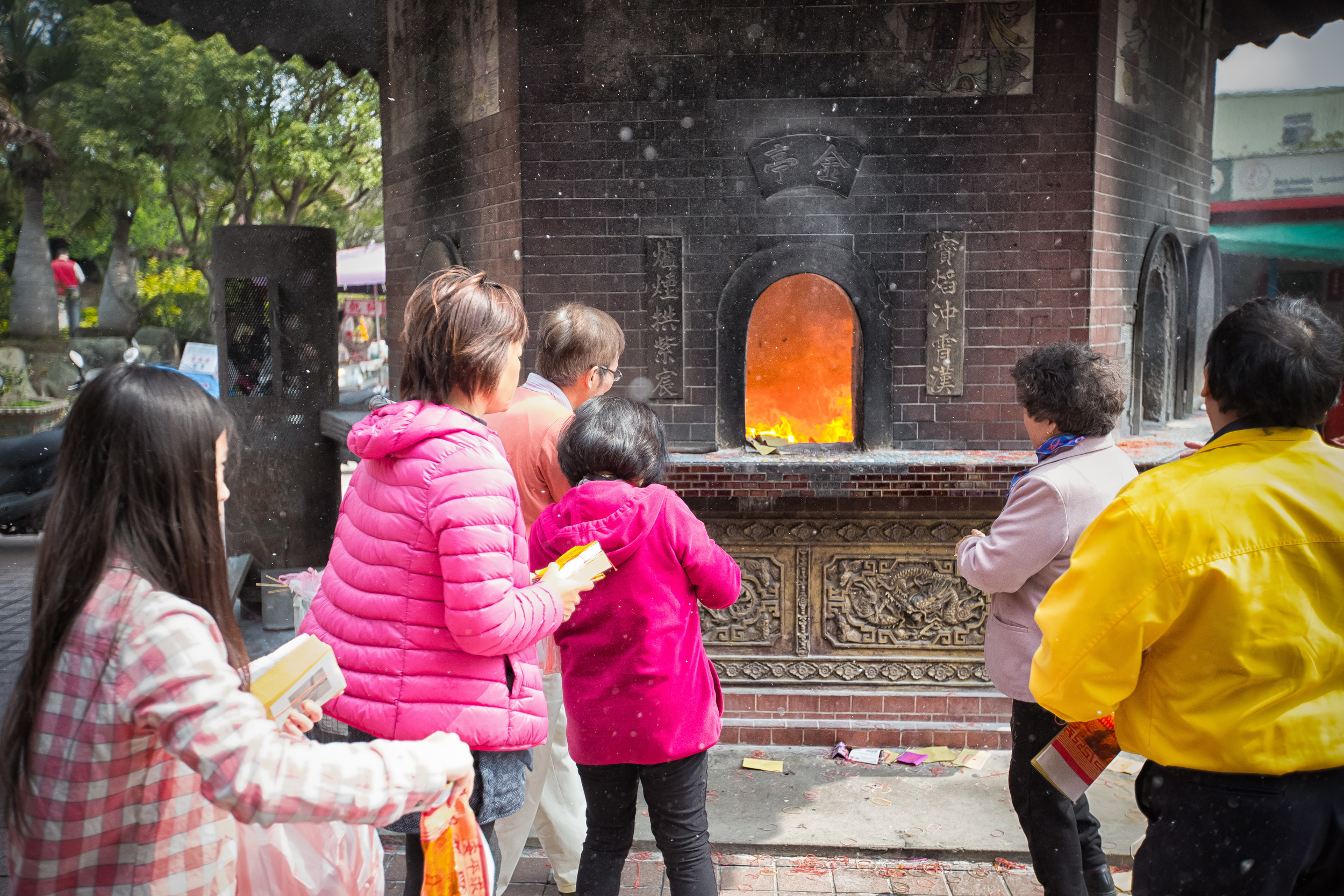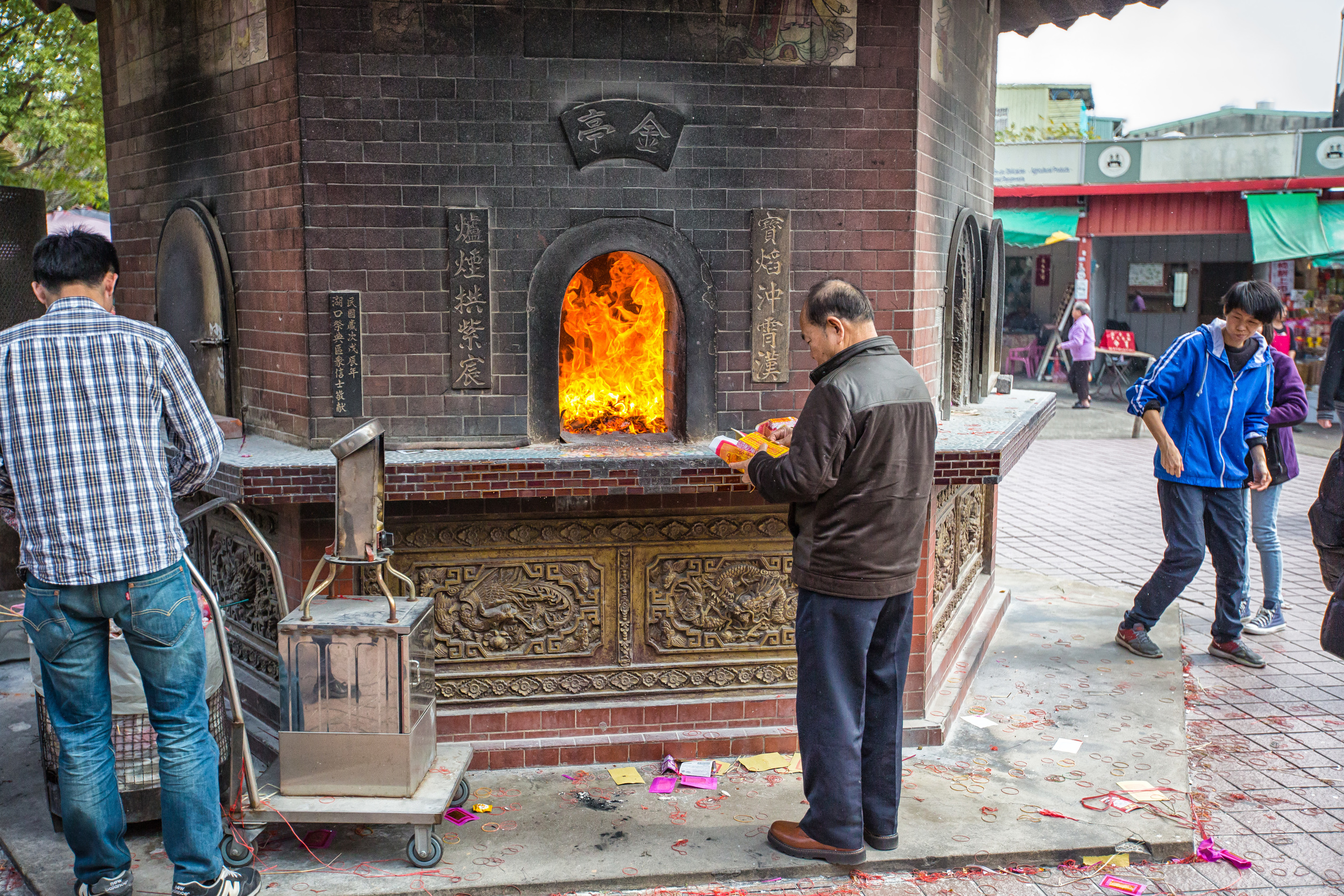The Nature Loving Wonderland (大自然文化世界) is an extremely large Buddhist monastery and tourist attraction at Emei lake (峨眉湖) in the mountains of southern Hsinchu county.
The temple boast an ostentatious monastery, a large grounds paved in granite and the worlds largest standing statue of Milefo (彌勒佛), who is often referred to as the "Laughing Buddha" and is probably one of the most well-known images of a “Buddha” in the west. While not a historic figure like many of the other important Buddha’s, Milefo, who is of Chinese origin is considered by some to be the manifestation of Maitreya (彌勒菩薩) the "Buddha of the future."
While people in North America might think images of the Laughing Buddha are cute, he serves a role as a saviour-like figure for certain sects of Buddhism who believe that he (or she) will eventually appear to "save" humanity, just as Christians imagine their messiah will do.
Buddhism isn't exactly a philosophy with a lot of predictions for future salvation and/or destruction, so it is actually a bit strange that there are offshoots of Buddhism that believe this kind of thing. Nevertheless, there have been quite a few religious figures (cult leaders) over the years who have professed to be the Maitreya and have amassed great fortunes in doing so.
The monastery at Emei Lake is run by a group called "Maitreya Great Tao" (彌勒大道) which was founded by a monk named Wang Hao-Te (王好德).
Wang, like many other people of his generation escaped to Taiwan with the Chinese Nationalists after the horrible Chinese Civil War. Upon arrival in Taiwan, Wang became involved with the Chinese religion Yiguandao (一貫道), which itself incorporates Maitreya worship (despite not necessarily being Buddhist).
In 1987, Wang opened the "Providence Maitreya Buddha Institute" (天恩彌勒佛院) which today boasts over a million members and over 2000 temples around the world.
The purpose of the sect, which adheres to aspects of Buddhism and Yiguandao is to promote “world peace”, “healthy living”, “environmentalism” and a “prosperous healthy nation”
All of which sounds really nice, but like all religions, words often speak louder than actions.
The last time I checked, building a 75m tall bronze statue which requires digging precious metals out of the ground to go along with the huge granite base isn't exactly what I'd refer to as being environmentally friendly. According to the group though, their giant statue, the biggest in the world is meant to be a constant reminder that we should be “one with nature”.
To explain a bit of my confusion about this place, I’m going to explain a bit of the most basic tenets of Buddhism. The core philosophy of Buddhism is that 'life is suffering' and that suffering is caused by our attachment to things in this world.
The Buddha outlined what he called the four noble truths of existence:
Four Noble Truths (四聖諦)
Suffering exists (苦谛)
Suffering arises from attachment to desires (集谛)
Suffering ceases when attachment to desire ceases (灭谛)
Freedom from suffering is possible by practicing the Eightfold Path (道谛)
Buddhism's foundations are set in the four noble truths and they are the path that the Buddha promoted in order to attain enlightenment and achieve an end to suffering. Once you understand the four noble truths you are free to delve much deeper into Buddhist philosophy, which is quite interesting and appeals to a lot of people around the world.
The problem though is that if you don't recognize the four noble truths, it'd be kind of difficult to consider yourself a Buddhist and it would be even harder to live your life as a monastic.
Buddhists (no matter the variety) should be mindful of the four noble truths and attempt to put themselves on a path to freedom from suffering which the Buddha explained is caused in part by material attachments to earthly possessions.
When someone becomes a monk, they are supposed to give up all their possessions and live a simple life dedicated to meditation and reaching nirvana. Therefore their only possessions should be those things that are required for a very simple quality of life. Monks are not supposed to possess things that could inspire negative emotions like possessiveness, greed or envy.
The Dalai Lama explains:
According to Buddhist practice, there are three stages or steps. The initial stage is to reduce attachment towards life. The second stage is the elimination of desire and attachment to this samsara. Then in the third stage, self-cherishing is eliminated
With this in mind, when you will see monasteries that look like palaces you may scratch your head thinking:
Is all this really necessary?
If the primary cause of suffering, according to the Buddha is 'attachment' then why is it that a monastery like this has to be as huge and as ostentatious as it is? Shouldn't monks be leading a much simpler life?
When it comes to material possessions and attachments, some may argue that times have changed and the latest iPhones are just as necessary as your rice bowl.
I can also completely understand that in modern times it isn't a great idea to seem like a homeless person walking around in robes looking for alms from others. The key thing is to not have possessions that cause craving or attachment.
The question you have to ask yourself is how do you think these people would react if suddenly all of this stuff that they've constructed was destroyed or lost? How would the people who run this "wonderland" react if all of this was suddenly gone in the blink of an eye?
The Maitreya Institute seems to keep this in mind, especially when it comes to their guests and they go above and beyond protecting their investment. They have instituted a list of rules that you have to accept to be permitted entry to their "Nature Loving Wonderland."
Considering that the "wonderland" is also a monastery, it is normal to see a list of rules regarding dress or lack thereof. While it does bother me that religious places like this still try to attempt to dictate what a woman can or cannot wear - but for Taiwanese guests, I suppose they are less inclined to complain about that kind of stuff and are willing to accept the sarongs provided by the staff at the gate to cover themselves up.
Once you get past the gates you will be led into the basement of the monastery by a set of stairs adjacent to the main doors. You will be given a pair of slippers to put on and an area to safely place your shoes.
There are a few reasons as to why they want you to remove your shoes - The first being that they don't want you walking through the monastery dirtying up their shiny expensive floors and because they would prefer you to not have the ability to escape the tour (indoctrination session) you are about to experience.
As you walk through the halls, you will notice a couple things:
The attention to detail in all of the decorations.
How much cash they must have spent on decorating the place.
The smiling secret service-looking volunteers standing guard a few meters apart from each other with headsets on making sure that you don't wander off or touch any of the bling bling.
Apart from the rules pertaining to clothing, they also don't permit you to bring in non-vegetarian foods, cigarettes, alcohol, drugs, dangerous weapons and pets.
Wait a second!
Pets? Pets are not permitted? I can understand high heels not being permitted. But pets aren't weapons of mass destruction, nor are they poisonous or nefarious substances that will affect the spiritual life of the monastics.
Is this place not named the "Nature Loving Wonderland?"
While this is not uncommon in temples around Taiwan, most of the other temples you’ll come across weren’t constructed on the premise that they’re "Nature Loving Wonderlands.”
I mean, I’m not really expecting them to have a full-fledged zoo inside, but it does seem a bit strange to me.
Nevertheless I happened to have my dog with my the day that I visited. I figured that I’d be able to take him into the front garden area of the temple while my friends took the tour. The kind people at the gate instead informed me that I could simply leave my dog in the car while I was enjoying the tranquility of their fabricated natural garden.
Can you imagine my reaction? These "nature loving" people actually advocated leaving my dog in a hot car on a 30 degree day so that I could come in and enjoy the monastery? No thanks guys, I prefer not to perpetuate the suffering of other living beings so that you can show off your vanity.
You may think I'm being unfair - quite a few places ban pets, its not really a big deal, but when you call yourself a Nature Loving Wonderland, it doesn't make a whole lot of sense to ban nature.
Other large monasteries around Taiwan allow pets in the garden areas, but not inside the actual monastery.
That is completely understandable.
I didn't expect to bring my dog into the actual monastery and considering that photography is not permitted inside, I wasn't particularly interested in going in anyway.
The Buddha was clear when it came to materialism so it confuses me when you see these beautiful palaces constructed with the pretences of adhering to his philosophy. The money that was used to construct this place, all of which was donated by followers, could have been used in much better ways that are more humanistic, better for society and most importantly, better for the environment.
To be fair, I realize that what I see as the irony of these massive monasteries may just be a modern approach to Buddhism. I can also certainly understand that if I spent that much money on something that I'd want to protect it as much as possible.
My biggest issue is that the name "Nature Loving Wonderland" in both English and Chinese (大自然文化世界) is completely hypocritical. This complaint is not only based on the fact that they wouldn't allow my dog to enter to the grounds but because they have constructed such a gigantic temple to celebrate environmentalism, with absolutely no regard for the environment.
Although it does bother me quite a bit that a volunteer told me to leave my dog in a hot car.
Nature after all is "natural" and the Emei lake area was quite natural and beautiful before this group came along and constructed their own religious version.
I'll leave you with a quote from the "Dhammapada" - The Sayings of the Buddha:
Indeed, the path that leads to worldly gain is one and the path that leads to nirvana is another. Fully comprehending this, the bhikkhu (monk), the disciple of the Buddha, should not take delight in worldly gain and honour, but devote himself to solicitude, detachment and the realization of nirvana. (Verse 75)
誠然,一個是導向世俗成就之道,另一個則是導向涅槃之道。明了這一點,身為佛弟子的比丘,不應樂於世俗的成就與恭敬,而應培育捨離與不執取。
Getting There
The monastery is located in the mountains of Hsinchu County at Emei Lake (峨眉湖), a short distance from the popular Beipu Old Street (北埔老街). It is accessible by car, scooter and local public transportation.
Address: 新竹縣峨眉鄉湖光村快樂路1號
If you would like to make use of public transportation to visit the Nature Loving Wonderland, you’ll first have to get yourself to the Jhudong Train Station (竹東車站) where you’ll hop on the Jhudong - Emei Lake bus. Likewise, if you take the High Speed Rail to Hsinchu Station you can make your way to Exit 4 and wait for Bus #6 that will take you to Emei Lake.
For more information about public transportation options, check their website below which has very detailed information on how to get there.
It is also important to note that the monastery is really open to individual tourists on weekend - from Tuesday to Friday, they require groups of over fifteen people for their tours. So if you plan on visiting during the week, you may have to wait around for a while for other people to show up.
Website: Nature Loving Wonderland











